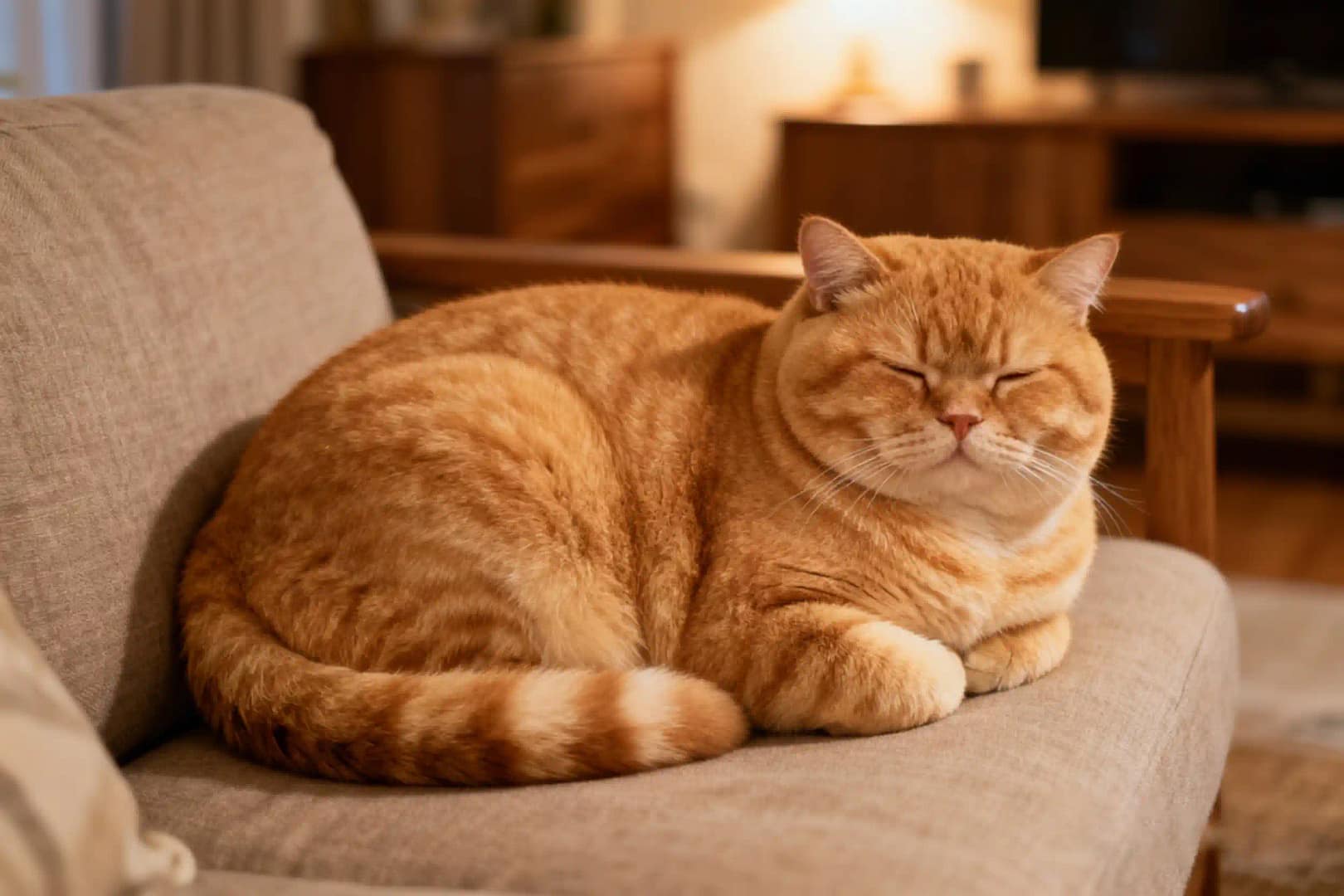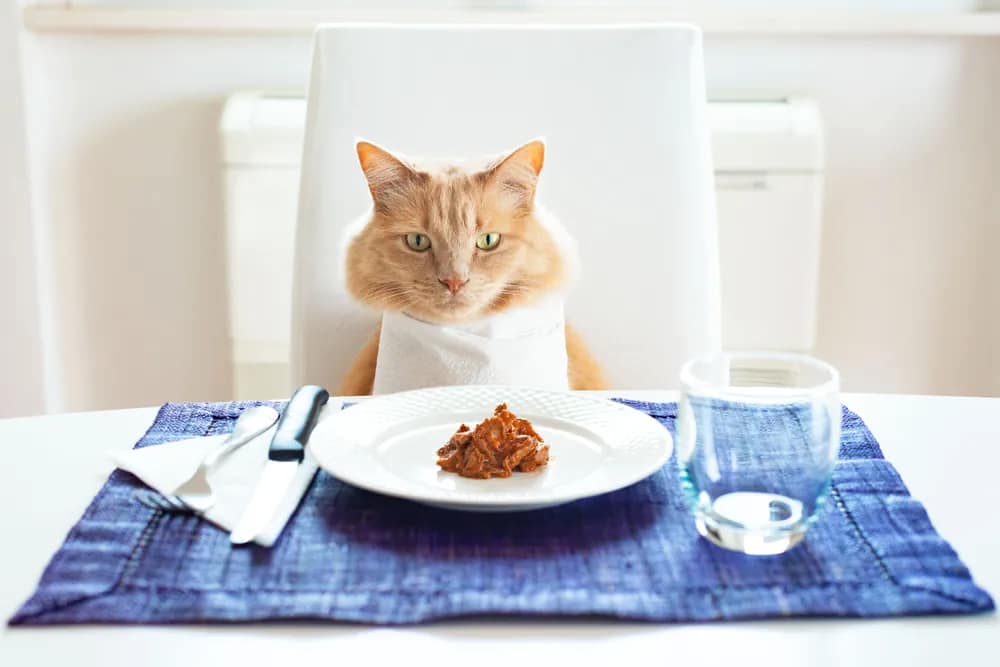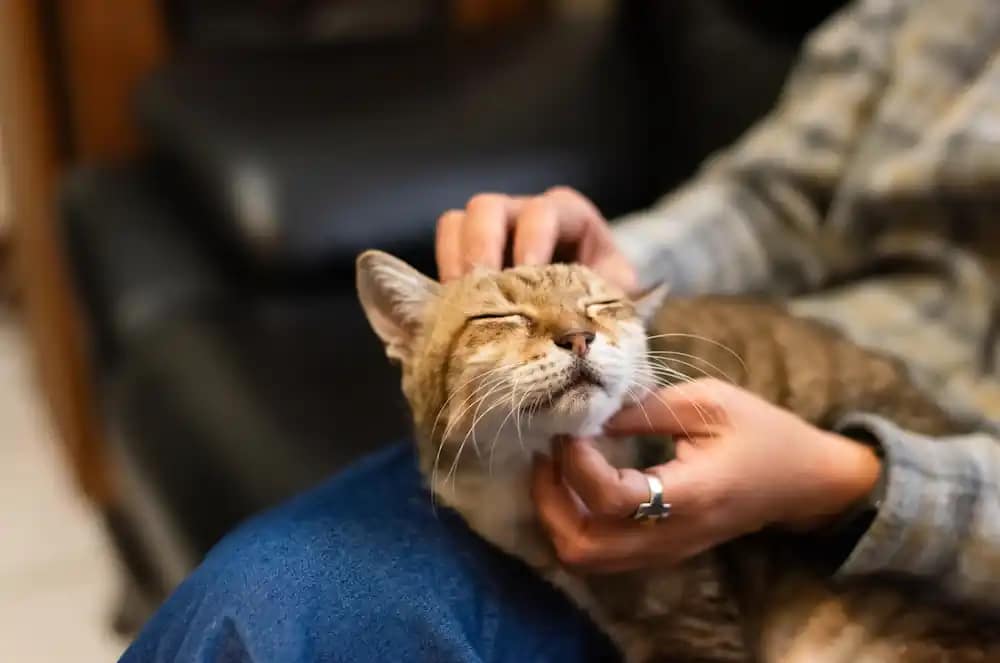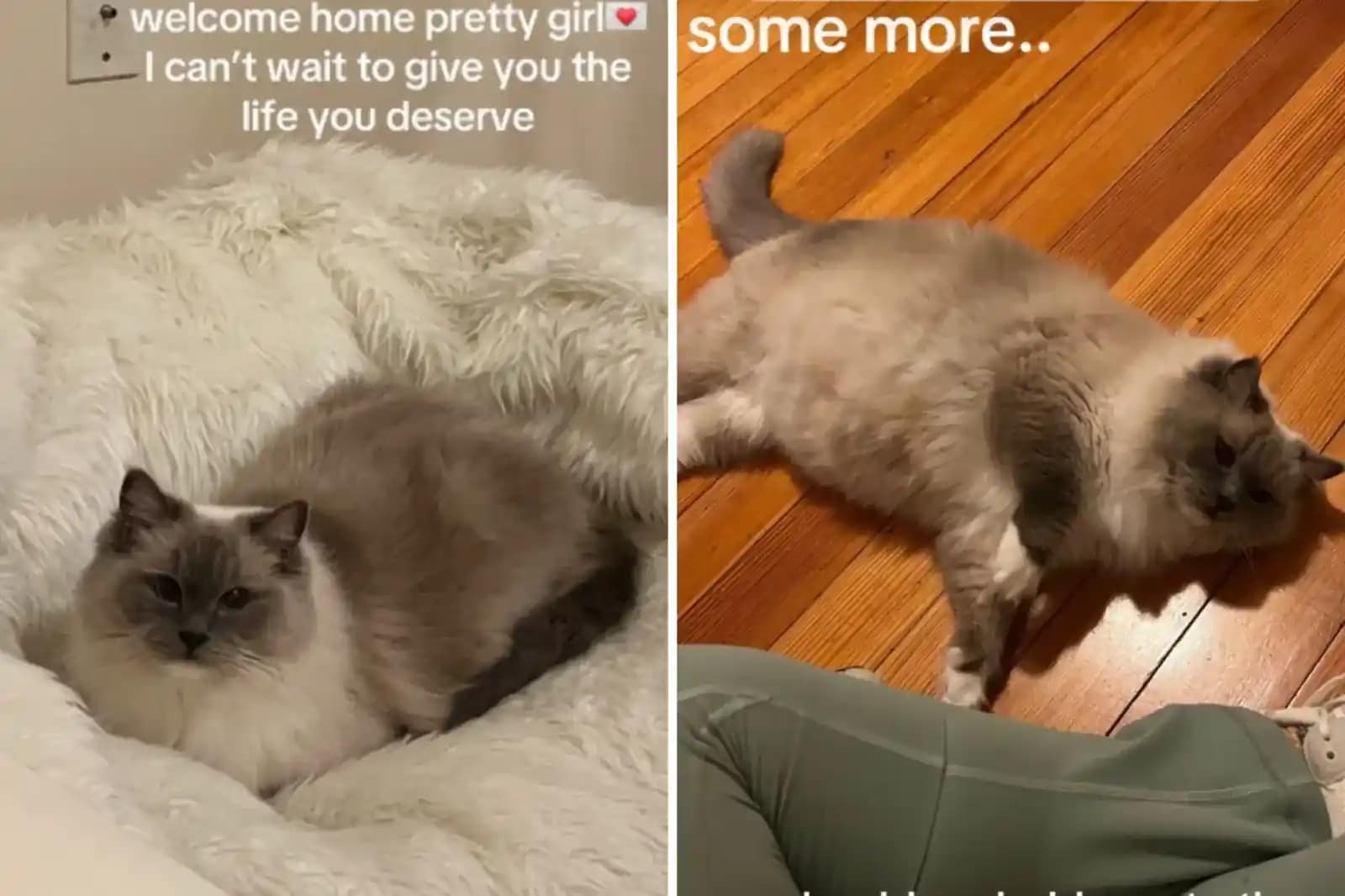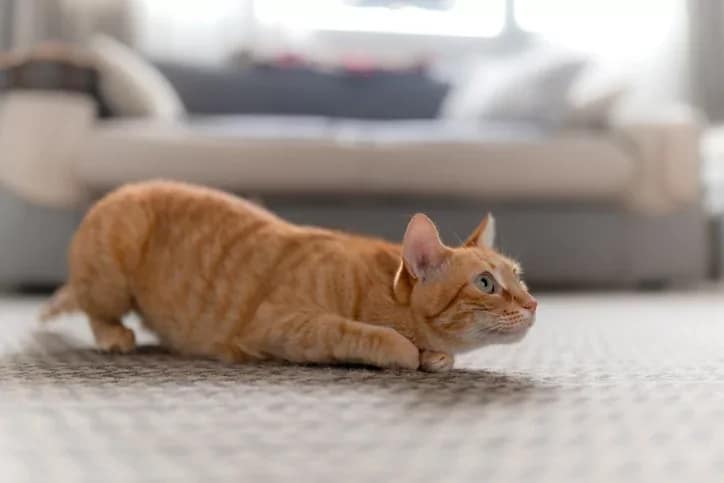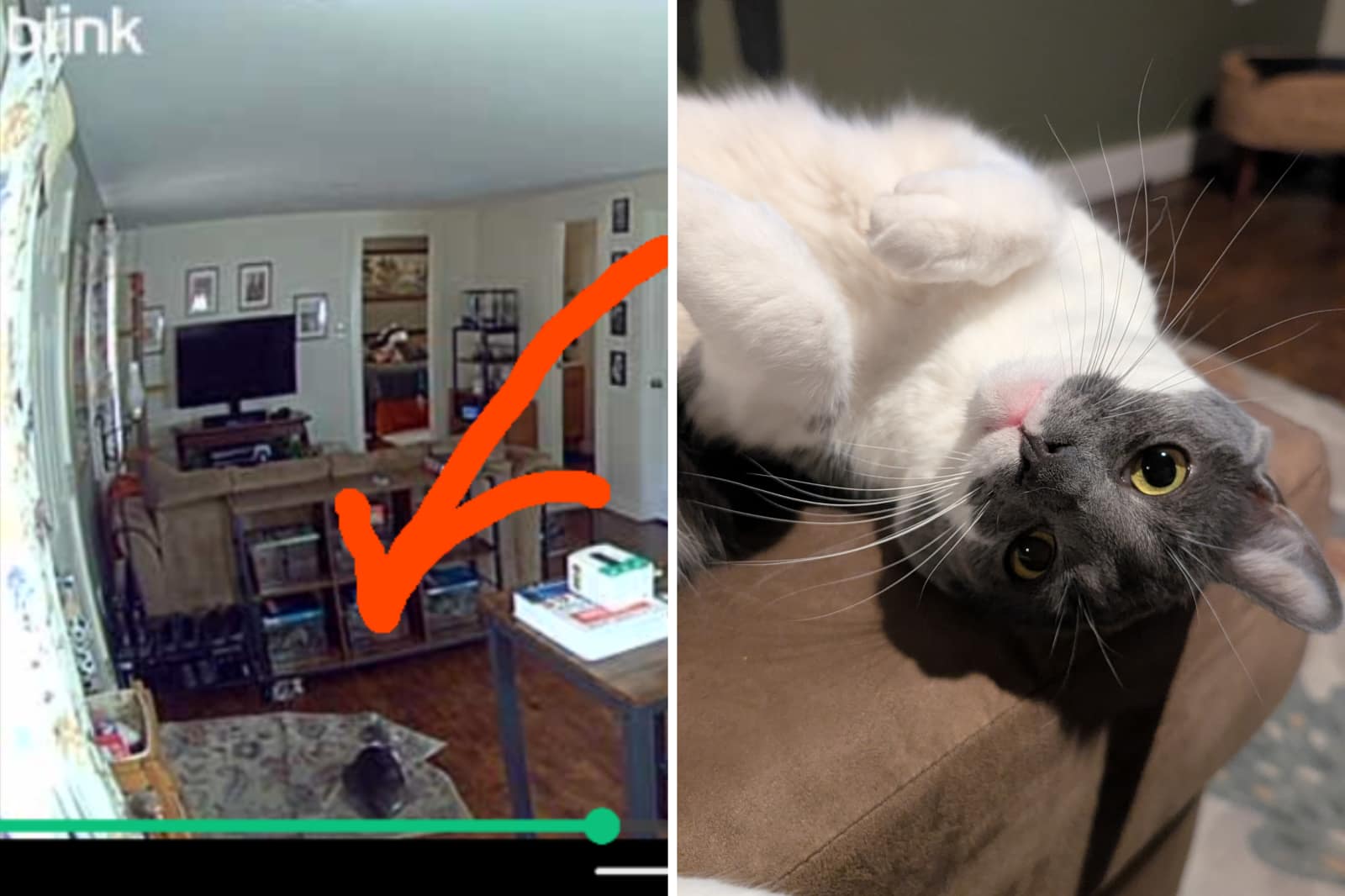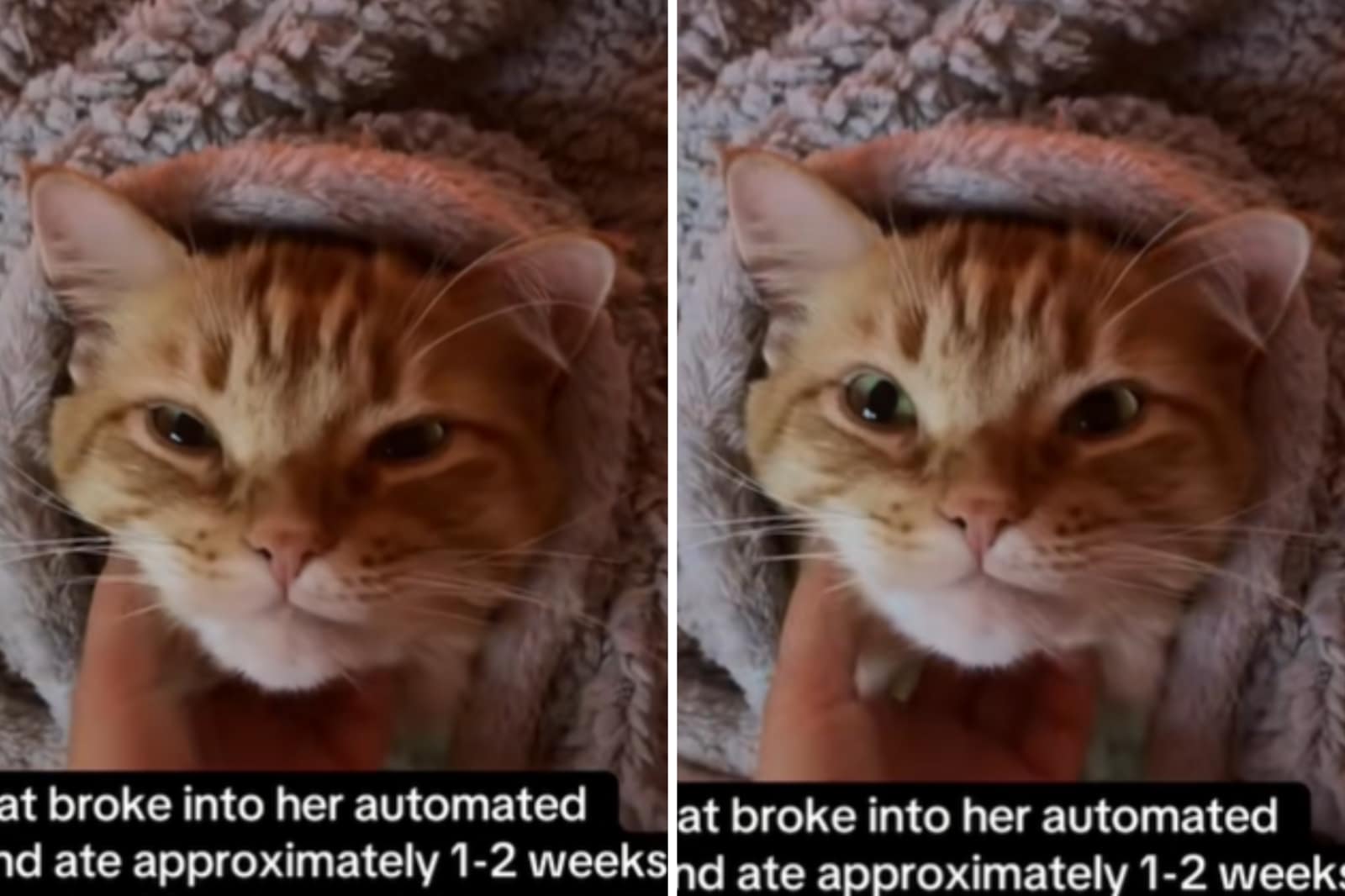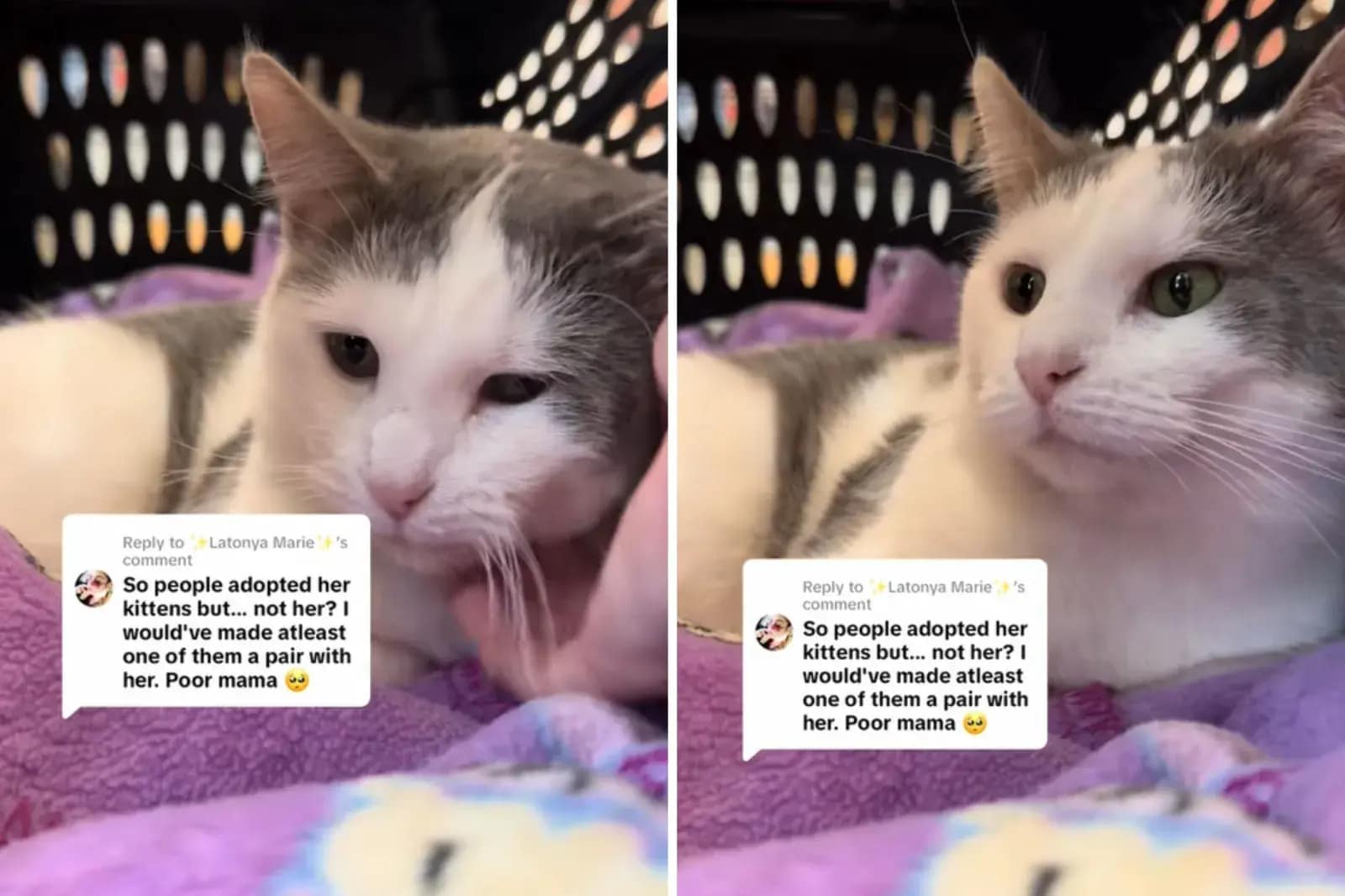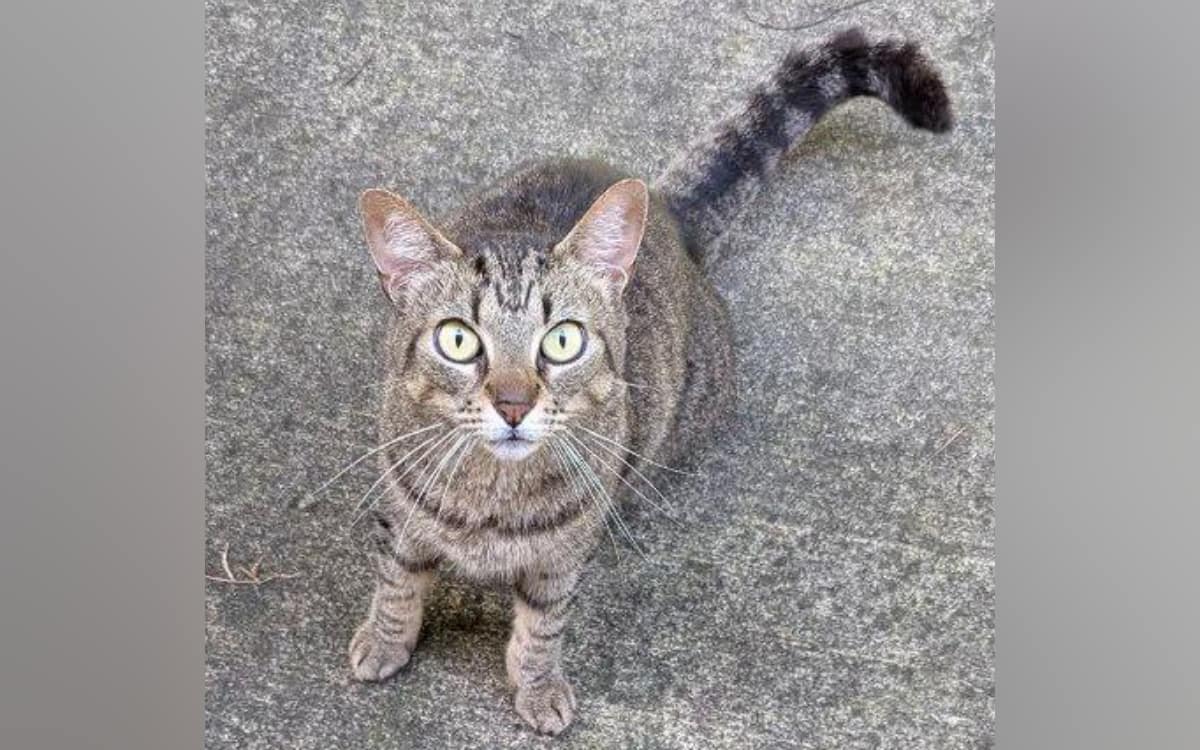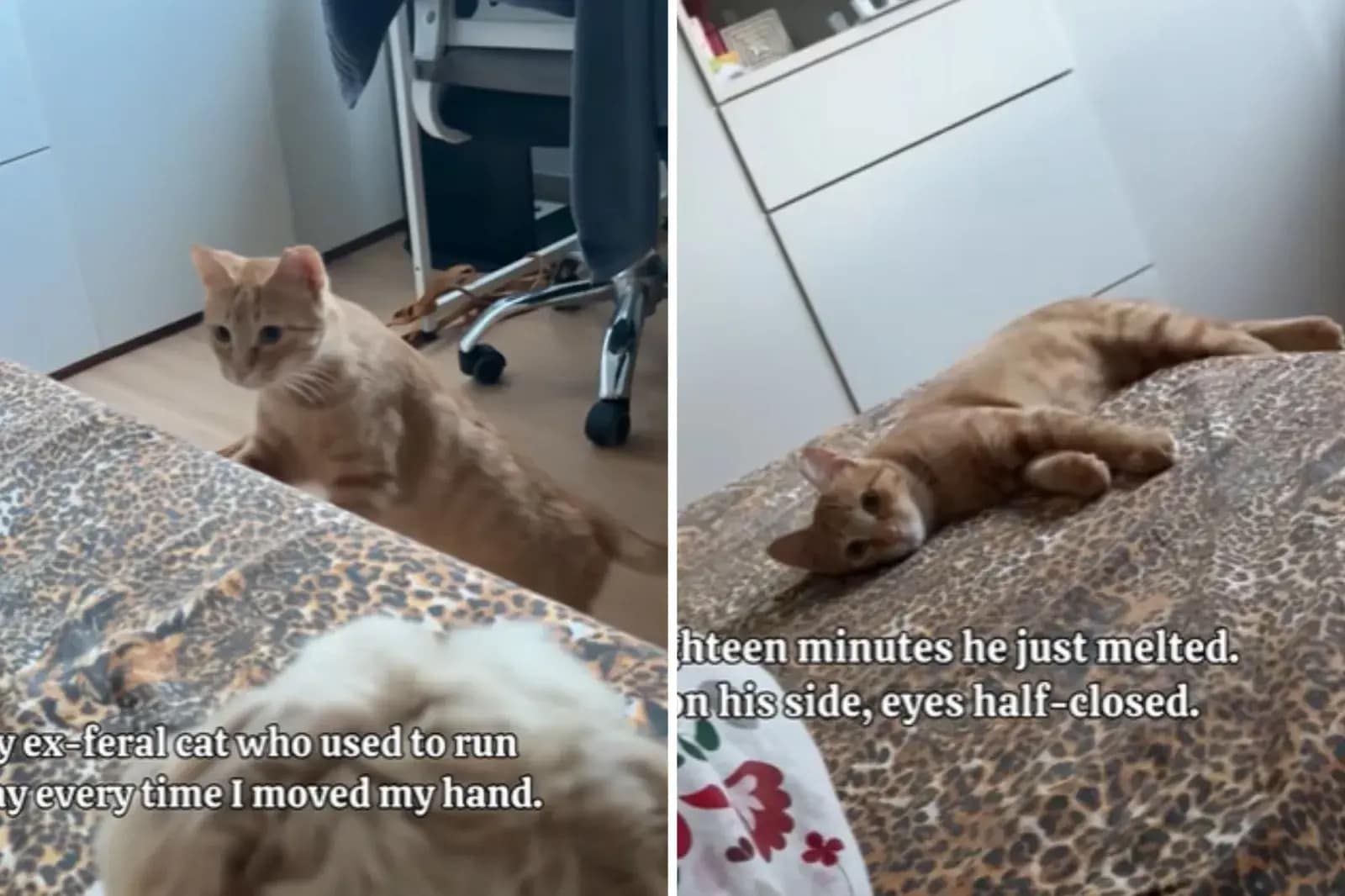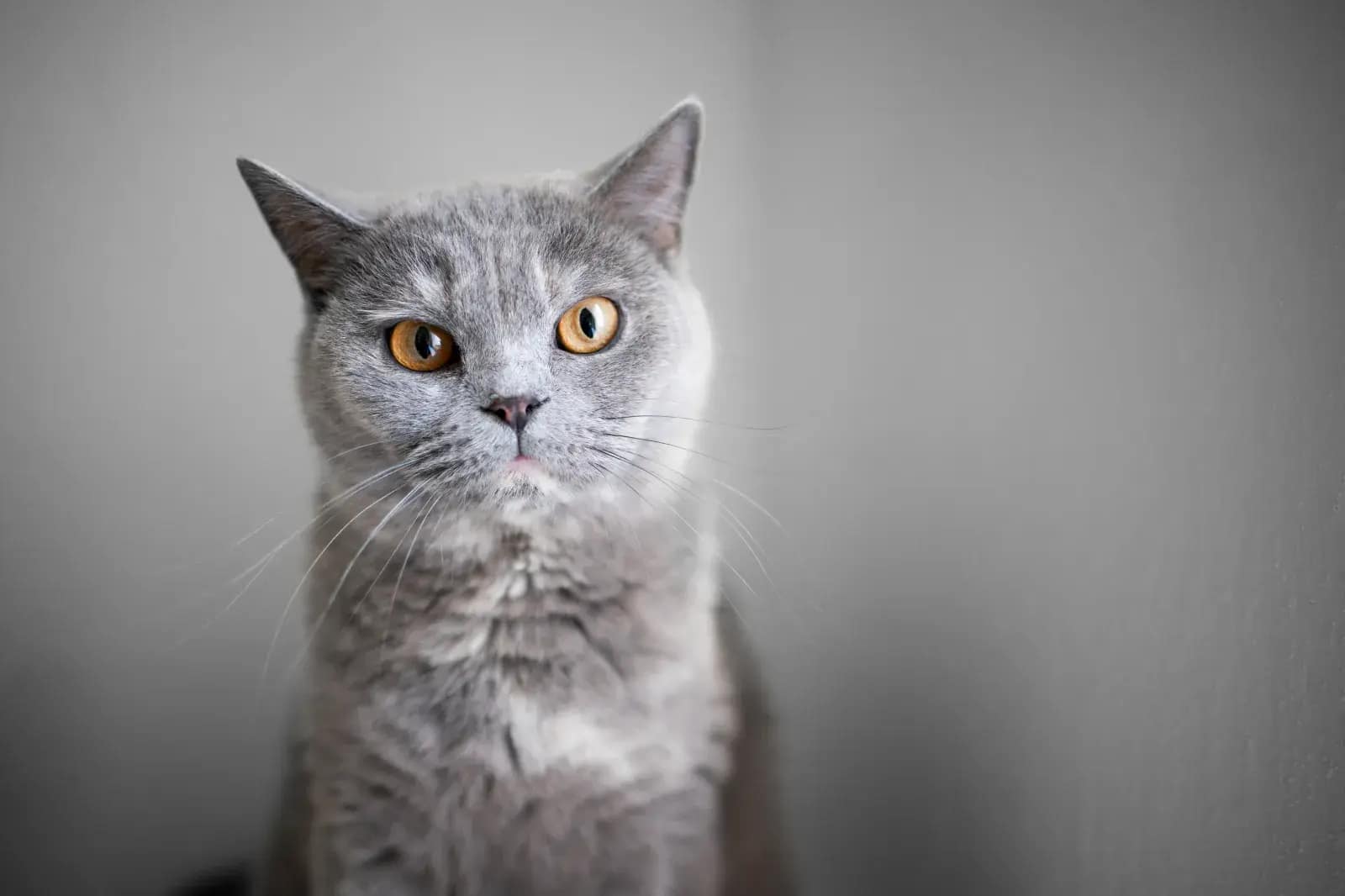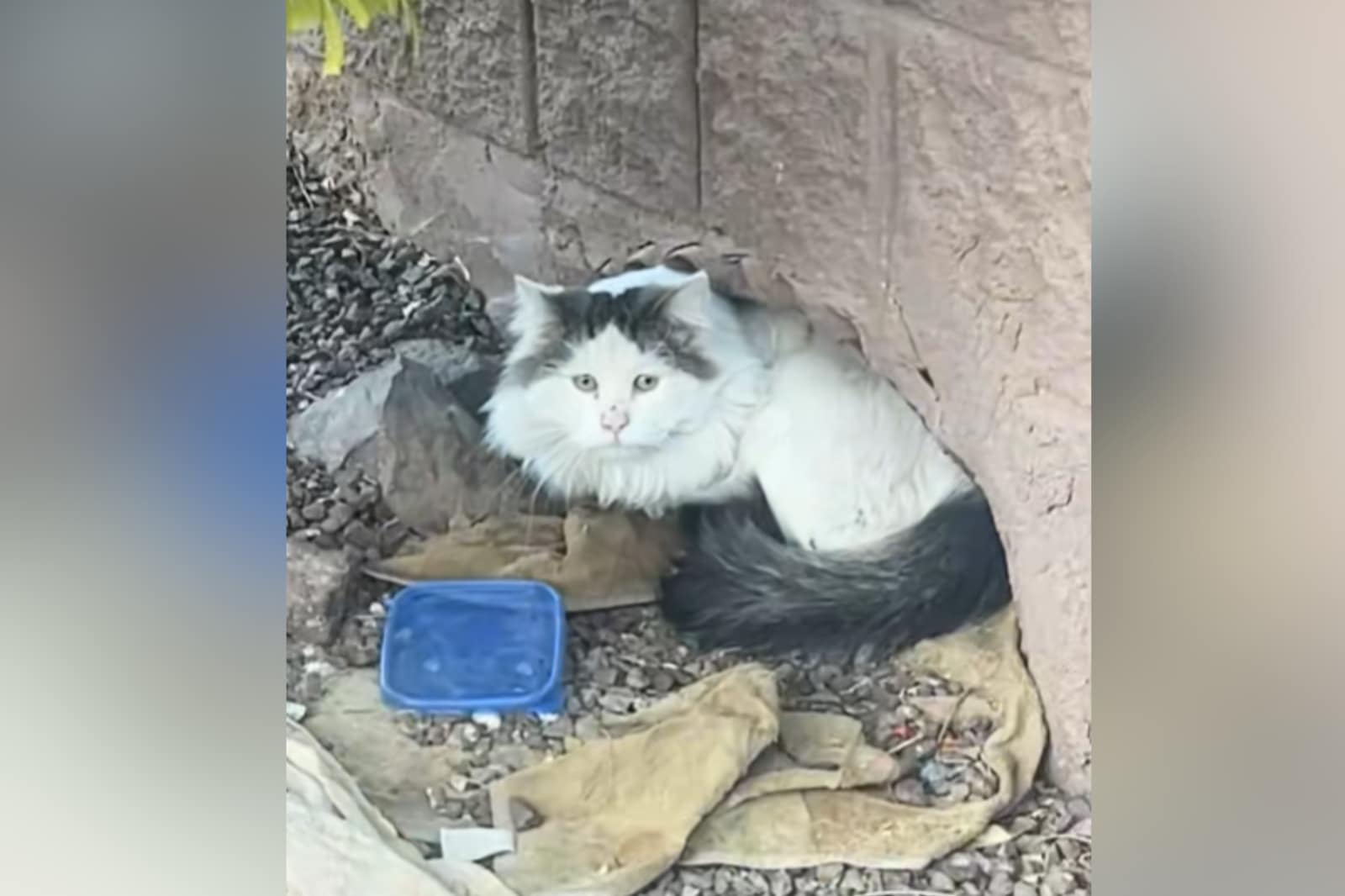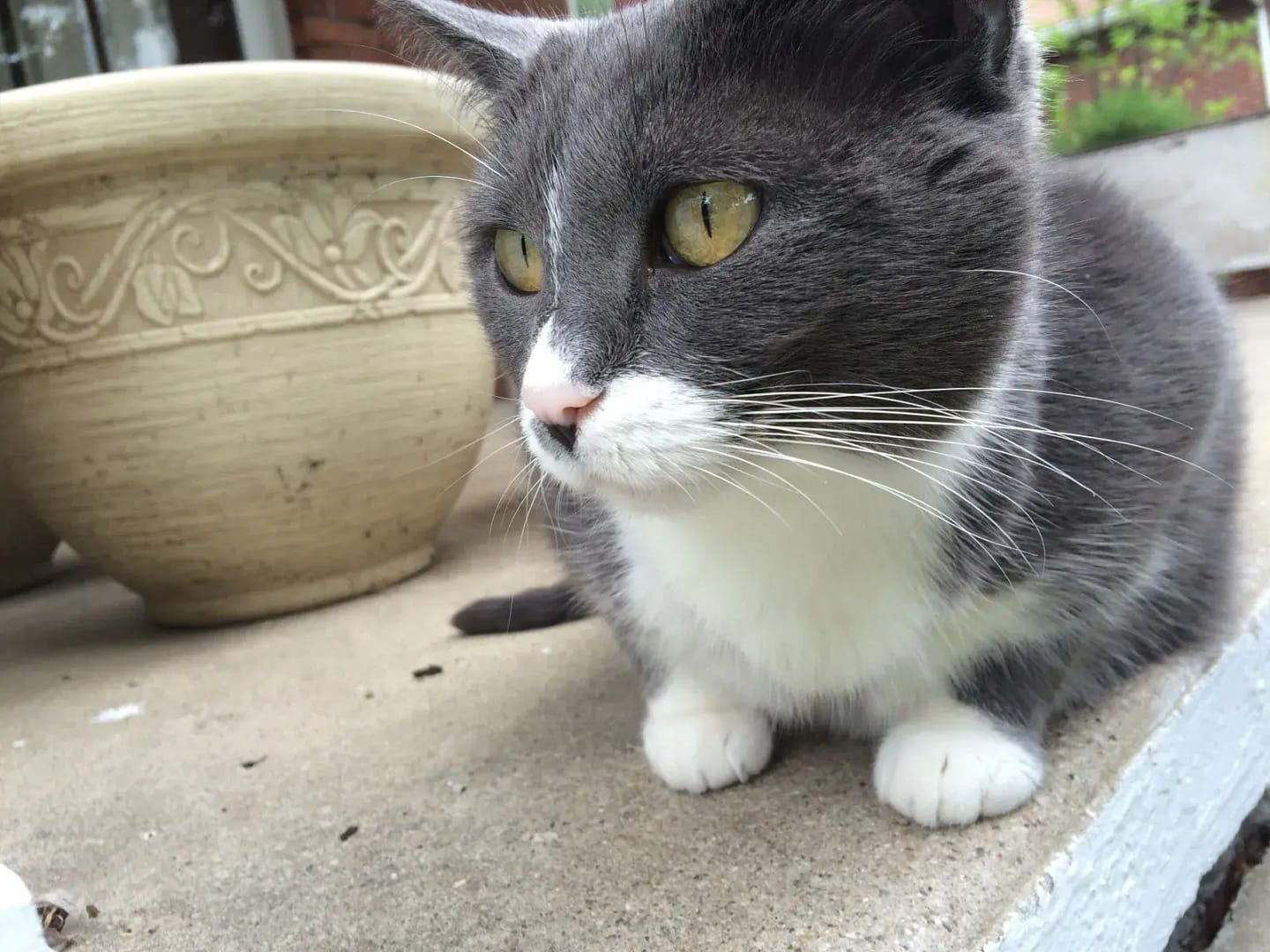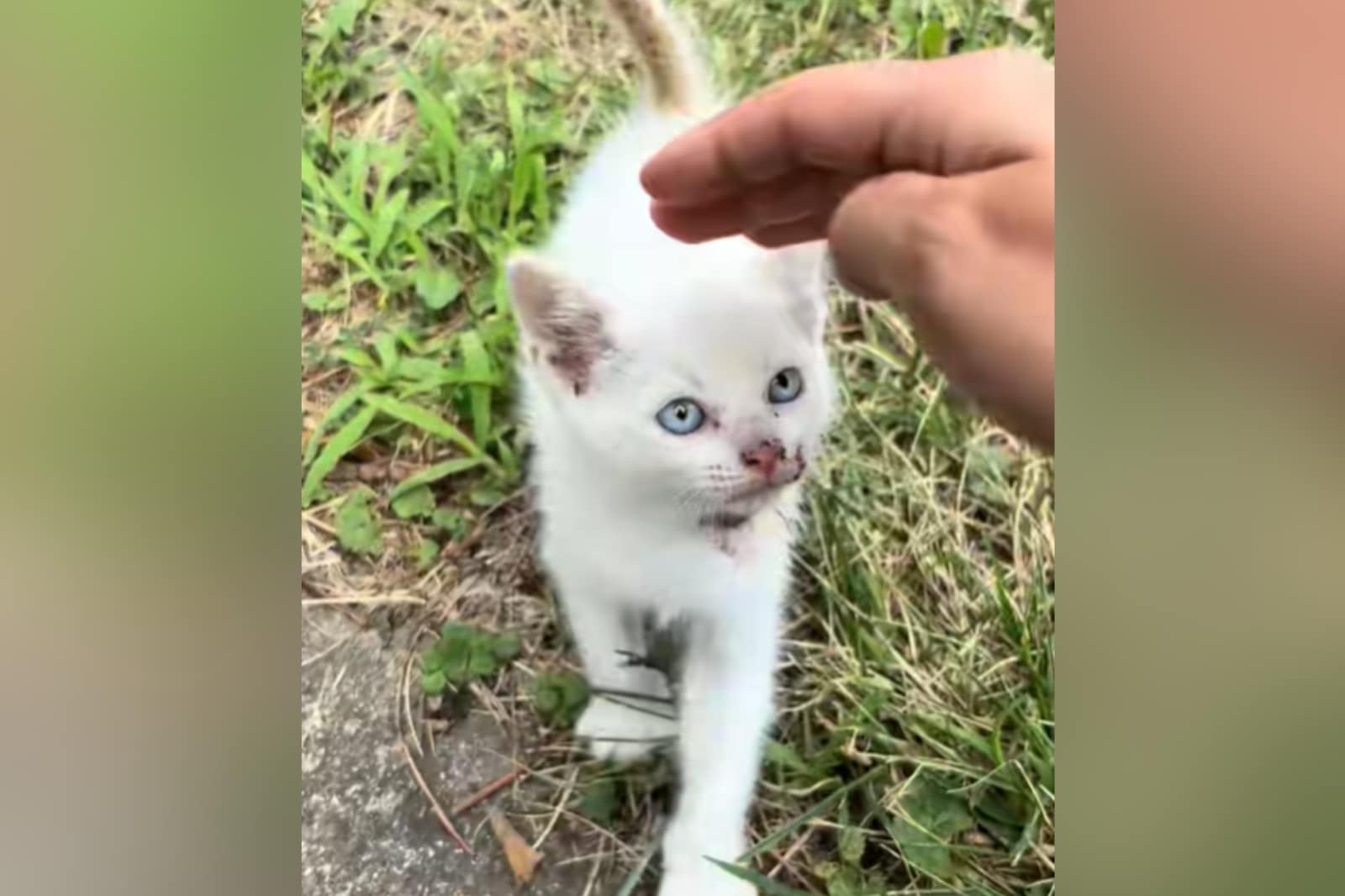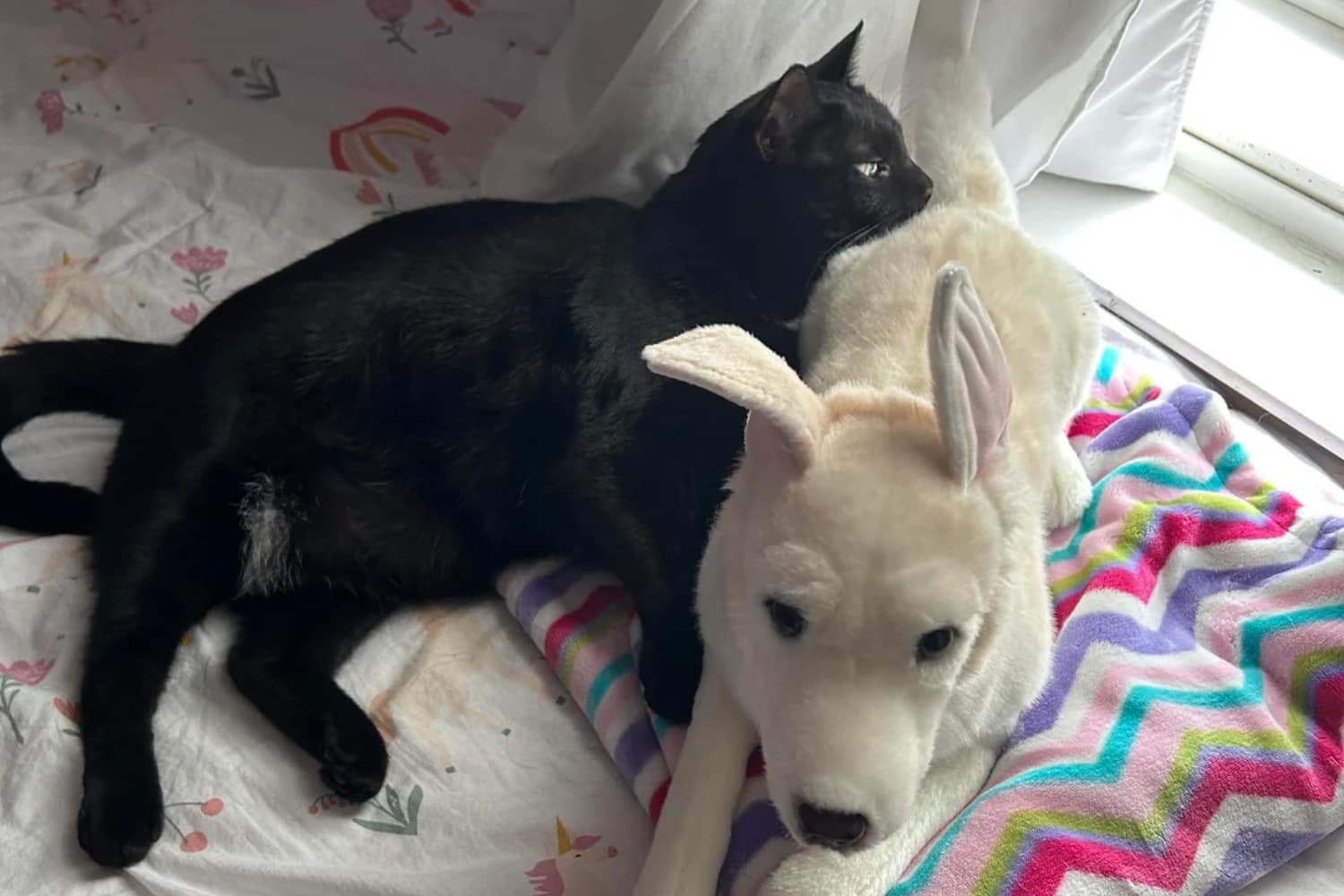Have you ever walked into the room to find your cat sitting with all four paws tucked neatly under their body, resembling a cute little loaf of bread? As cat parents, we often get asked why do cats “loaf” and whether this behavior is normal.
The short answer is: yes, the “cat loaf” (or cats tucking their paws under themselves) is usually a normal, adorable feline resting pose. Cats loaf for a variety of reasons – from pure comfort and warmth to feeling safe and content, and sometimes as a way to protect themselves or even because they’re not feeling well.
In this article, we’ll unpack the science and signals behind the cat loaf position, explain when it’s a sign of a happy relaxed kitty and when it might indicate something is wrong, and share how you can make loafing even more enjoyable for your furry friend.

Key Takeaways
- What is a Cat Loaf: A cat loaf is the endearing pose when a cat sits upright with paws and tail neatly tucked underneath, forming a compact, loaf-like shape. It’s also called “bread loaf” pose, “hovercat,” or “tucked paws” position, and it typically means your cat is relaxed yet alert.
- Common Reasons for Loafing: Most of the time, cats loaf because they’re comfortable, content, and feeling safe – often near their favorite humans. Loafing also helps cats conserve body heat by tucking in their paws. In some cases, cats loaf to protect their belly and vital organs If you pair the loaf posture with raised fur or a stiff tail, what your cat’s tail is telling you can help confirm whether they’re on edge or just excited.
- “Meatloaf” vs Normal Loaf: A normal loaf usually signals a happy, relaxed cat, especially if accompanied by soft eyes, purring, or slow blinking. A “meatloaf” position – where the cat’s back is arched, head drooping down, and paws maybe extended – can indicate pain or illness. Always watch for other symptoms (like lethargy, not responding to you, or changes in appetite) to tell if a loafing cat might be unwell.
- When to Worry: Sudden changes in your cat’s loafing habits or posture can be a red flag. If your cat starts loafing far more than usual, appears hunched with their face down (“meatloafing”), or shows signs like trembling, hiding, aggression, or not wanting to move, it could mean they’re in discomfort. In these cases, it’s best to consult a veterinarian to rule out any health issues.
- How to Help Your Loafing Cat: You can encourage healthy, happy loafing by providing warm, cozy, and secure spots for your cat to relax. Many cats choose loafing spots based on warmth and safety – like a soft bed in a quiet corner, a sunlit windowsill, or even your lap or laptop (they love your warmth and scent!). Make sure your home has some comfortable resting areas where your kitty can tuck in and feel safe. And remember, loafing near you is a sign of trust and affection, so enjoy the compliment!
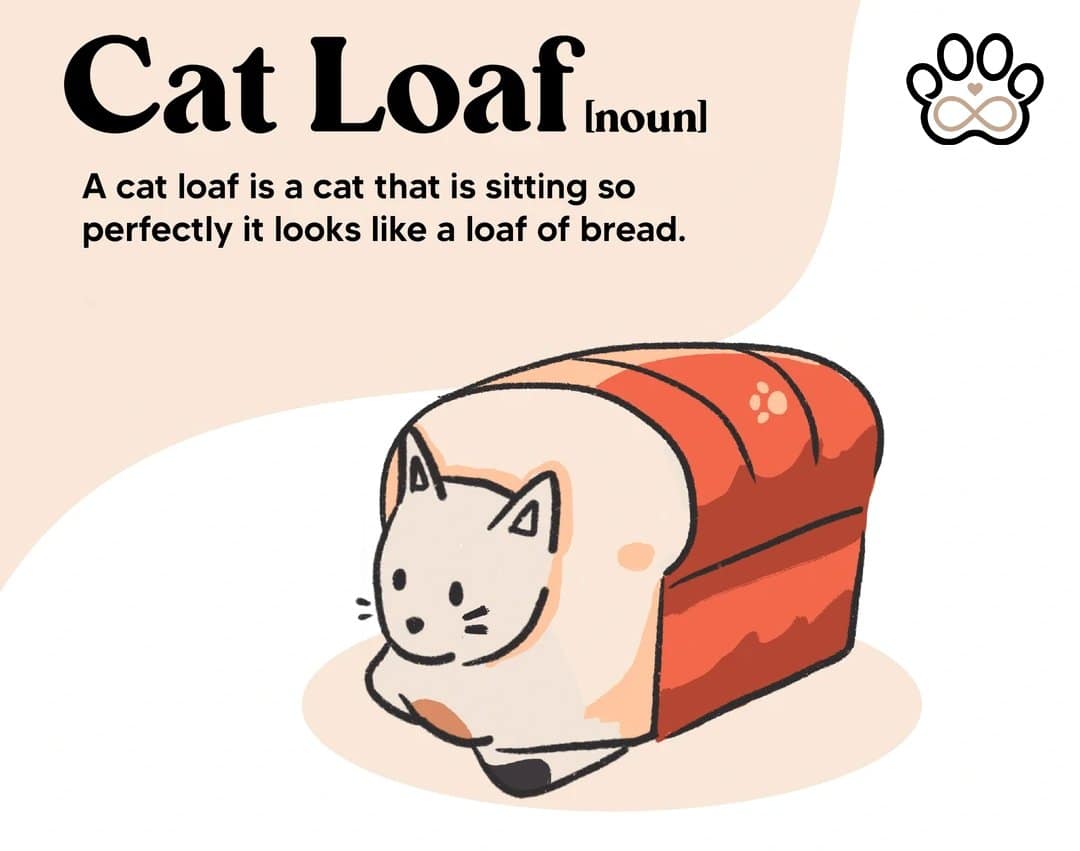
What Is a Cat Loaf?
In simple terms, a cat loaf is that familiar pose where a cat sits upright with its feet tucked under its body, resembling a loaf of bread. The cat’s body is compact and rounded with no legs visible – just like a loaf.
Many cat lovers affectionately use food terms for this pose (you might hear “cat loaf,” “bread loaf,” or even “potato cat”). If the image isn’t clear yet, think of the ancient Egyptian Sphinx statue – when cats loaf with their front paws stretched out, they can look just like a mini Sphinx.
More commonly, though, all four paws and the tail are fully tucked beneath the cat, and the cat’s head is upright but relaxed. Cats often assume this loaf position to rest comfortably while staying moderately alert, ready to spring up if needed.
From above, a loafing cat has a rectangular shape with rounded edges (hence the bread loaf comparison). It’s one of those quirky feline behaviors that’s both adorable and telling.
In fact, the term “cat loaf” has become part of the cat-loving community’s vocabulary – you’ll see countless photos, memes, and even artwork celebrating cats in this pose. But beyond the cuteness, the way a cat loafs can give insight into their mood and well-being, as we’ll explore below.
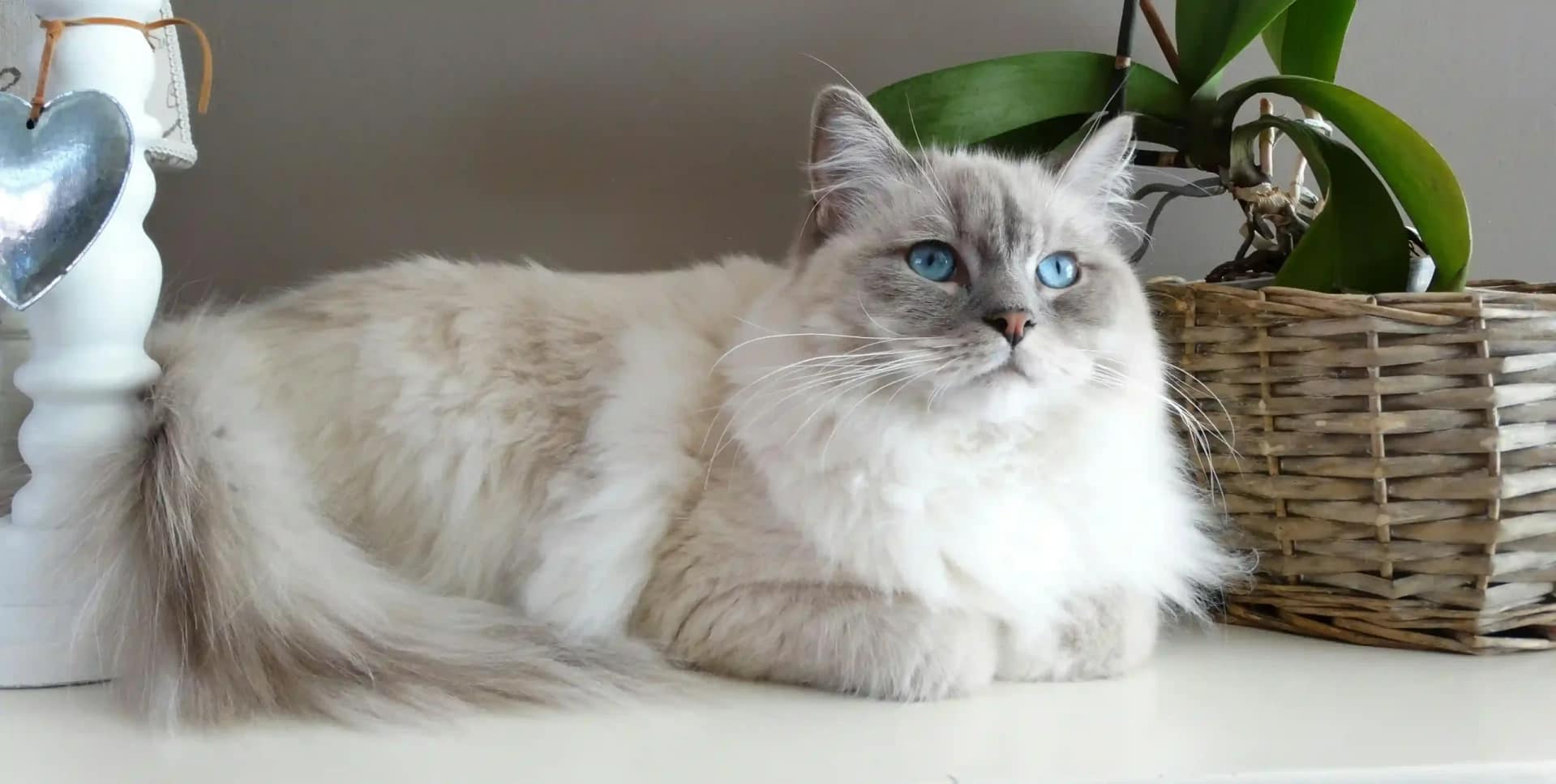
The Many Types of Cat Loaf Positions
Not all cat loaves are exactly the same! Cats have slight variations in how they tuck their paws or position their heads, and these different “loaf styles” can have slightly different meanings. Here are some common types of cat loaf positions (you might recognize a few that your cat does):
The cat loaf is just one of many quirky cat sleeping positions (Cat Sleeping Positions: 20 Meanings the Way Cats Sleep) that can reveal how relaxed, playful, or vulnerable your cat feels at any given moment.
Full Loaf
The classic loaf position. All four paws are completely tucked under the body, the tail is wrapped around, and the head is up. A cat in a full loaf looks like a perfect little bread loaf with no limbs showing.
This usually indicates maximum contentment and relaxation – your cat is so comfortable that they’ve tucked in every extremity safely. Full loaf cats tend to have soft, calm expressions. (Picture a person settling into a comfy armchair – that’s your cat in a full loaf.)
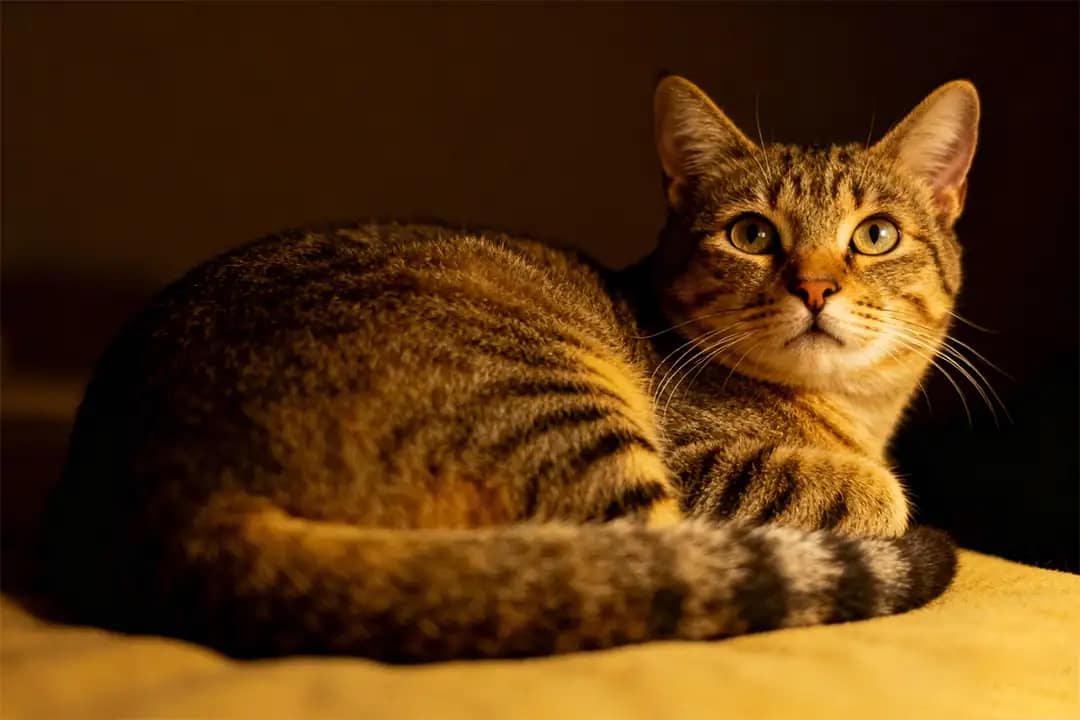
Partial Loaf
In a partial loaf, the cat tucks in their hind legs and perhaps one front paw, but leaves one or both front paws visible (often folded neatly under the chest or sticking out slightly).
You might notice just the toes or part of the paws peeking out in front. A partial loaf usually means the cat is mostly relaxed but still a bit alert.
Maybe they’re not planning to nap long, or they’re staying ready to move if needed. It can also simply be a matter of anatomy or comfort (some cats, especially chubby or less flexible ones, might not tuck every paw fully).
Don’t worry – a cat with one paw out (“regal paw” as some call it) is often just as content, perhaps just stretching a little.
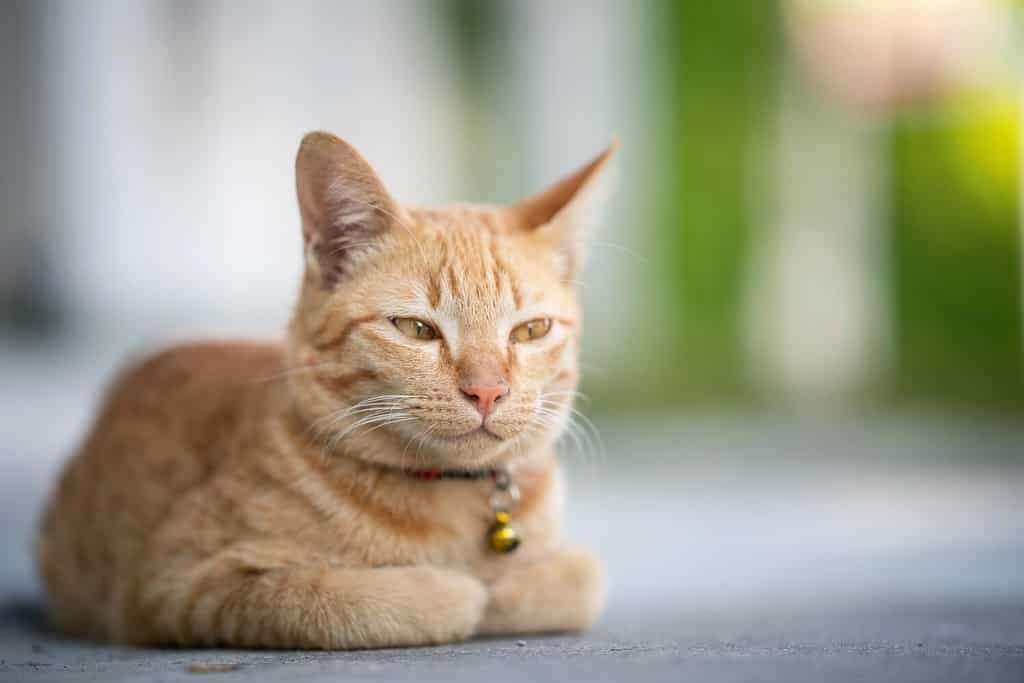
Loaf Boat (One Paw Out)
The amusingly named “loaf boat” is essentially a partial loaf with a twist: one front paw is extended farther forward than the other.
Imagine your cat has one paw out as if pointing ahead, while the other is tucked. Nobody knows exactly why it’s called a “boat,” but one theory is the single paw sticking out looks a bit like an oar or a prow of a boat.
Cats in the loaf boat position are usually relaxed but ready, kind of like they started to get up but then decided, “Nah, I’ll stay loafed.” It’s a cute middle ground between lying down and sitting up. (Some cat parents also joke that the “loaf boat” or “hovercraft loaf” is when the cat looks like a hovercraft with one landing gear down!)

Sphynx Loaf
Named after the iconic Great Sphinx, this loaf variation features both front legs stretched out straight while the rest of the body remains tucked. The cat’s posture is upright and regal, resembling the Sphinx statue with paws forward.
A sphynx loaf (not to be confused with the hairless Sphynx breed, any cat can do a sphinx-like pose) often indicates the cat is relaxing while still very alert and surveying their surroundings.
They might strike this pose when they hear something interesting but are still comfortable where they are. It’s like a halfway point between loafing and the typical “perching” stance. Behaviorists note that a cat in a sphynx loaf is relaxed yet ready – content but watching.
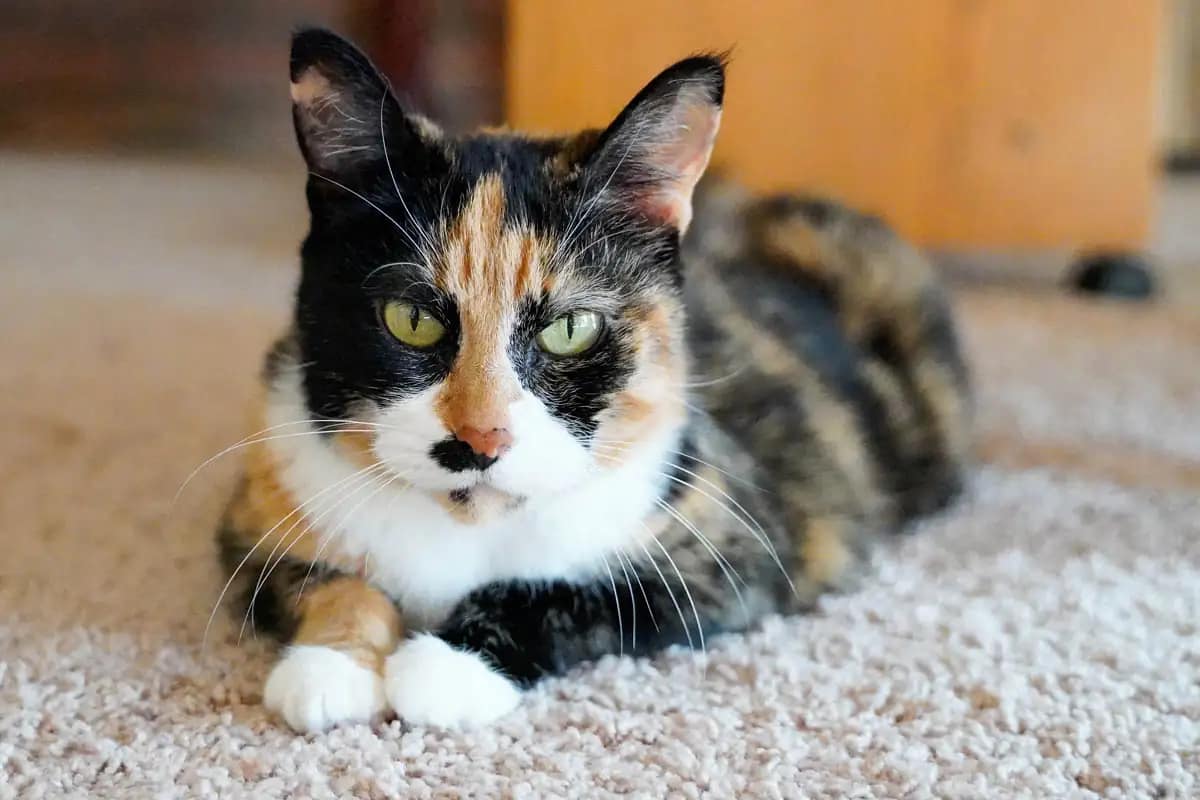
Face Loaf (Tuckered Loaf)
This one always makes us smile – the face loaf is when a cat in loaf position literally faceplants, dropping their head forward onto the floor or their paws. Picture a cat loafing, then gradually nodding off until their little chin rests on the ground – that’s a face loaf.
Stephen Quandt, a feline behaviorist, affectionately calls this the “tuckered loaf,” because the cat looks utterly tuckered out. A face loaf usually means the cat is extremely relaxed and possibly sleepy.
They might be in a deep state of rest or trying to block out light by burying their face. It’s generally a sign your cat feels very safe and comfortable (since flopping the head down is a vulnerable posture).
Do note: if the face is pressed down hard or the cat seems unresponsive, it could overlap with the “meatloaf” (unwell) look – but most of the time a gentle face loaf is just a sleepy kitty recharging.

Meatloaf Position
Despite the yummy name, a “meatloaf” in cat terms is not a happy loaf. It describes a loaf-like posture where the cat’s back is more arched or rounded, and they may be leaning forward with their paws still under them.
Often the cat’s head hangs down low or even almost level with the ground, and they might look like they’re painfully bracing themselves. Unlike a relaxed loaf, a cat in meatloaf position appears tense: they might only partially tuck their paws, or keep weight on their front legs, and their facial expression could seem strained or distant.
This posture can be a sign of discomfort, pain, or illness. Cats sometimes sit this way when experiencing internal pain (for example, cats with tummy troubles or kidney disease have been known to assume a meatloaf pose with head down).
If you notice a tense, hunched “meatloaf” plus changes in appetite, litter box habits, or energy, it’s time to talk to your vet and review our cat health guide for common warning signs you should never ignore.
(We’ll discuss later how to distinguish a meatloaf from a normal loaf and what warning signs to watch for.) If you see your cat frequently in a hunched, meatloafy posture and they’re not acting like their usual self, pay close attention – it may be time to call the vet.
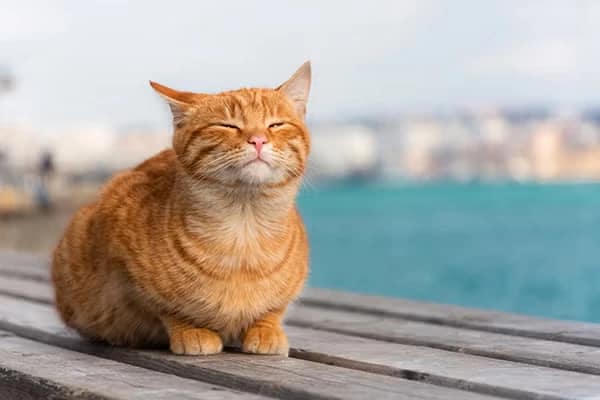
Double Loaf (and Triple Loaf!)
What’s better than one loaf? Two loaves! A double loaf is when you have two cats loafing next to each other (or near each other). It’s an overload of cute and usually a positive sign about the cats’ relationship.
If your cats loaf side by side, it often means they feel comfortable together and trust each other, since loafing is a somewhat vulnerable position. You might even observe them mirroring each other’s loaf posture – truly synchronizing their relaxation.
Occasionally, in multi-cat households (or viral internet photos), you’ll see a “triple loaf” or more, where three or more cats all loaf in a group. The more loaves, the rarer the sight – and the more aww’s it elicits from humans!
A triple or quadruple loaf means those cats get along and share a safe space. Group loafing tends to happen in calm, warm spots that all the cats are drawn to (like a sunny patch or a soft blanket).
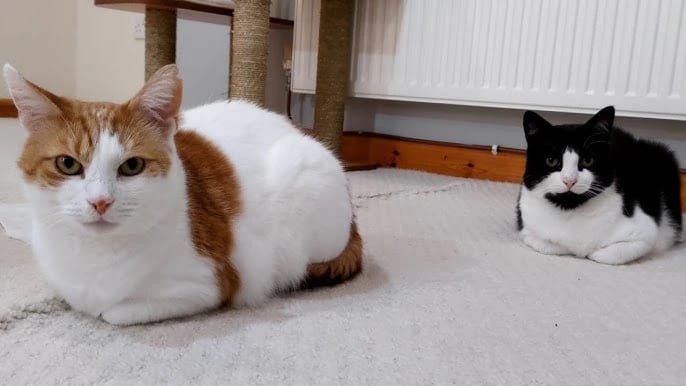
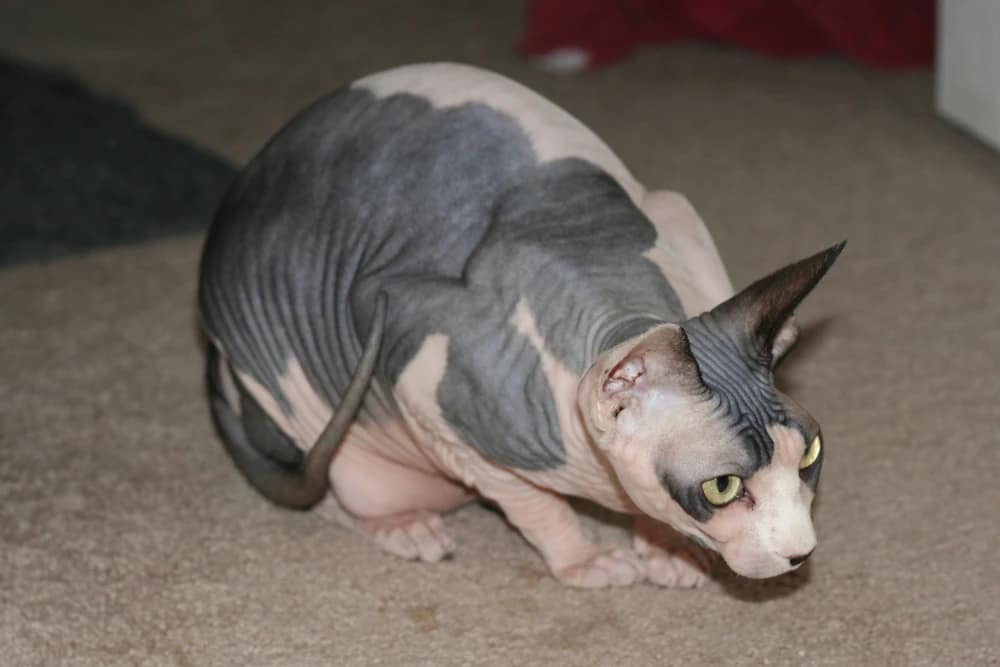
As you can see, the way your cat loafs – and the context – can tell you a lot. A content kitty might favor the full loaf or sphinx loaf on your couch, whereas a cold cat might do a tight loaf to conserve heat, and an unwell cat might sit in a meatloaf pose. Next, we’ll dive deeper into why cats loaf in the first place and what those reasons mean for your cat’s health and happiness.
Why Do Cats Loaf?
So, why do cats sit like a loaf of bread? Cats are complex little creatures, and their body language is full of clues about how they’re feeling. Loafing is no exception – this posture can reveal comfort, trust, or discomfort, depending on the situation. Let’s break down the main reasons behind cat loafing (from the pleasant ones to the concerning ones):
1. They’re Comfortable and Relaxed
One of the most common reasons cats loaf is simply because they’re comfortable. A cat that draws its paws in and cozies up into a loaf is often feeling content, safe, and at ease in its environment. Animal behavior experts confirm that the classic loaf usually indicates a relaxed, happy cat. “Cats that are comfortable in their surroundings often show the classic loaf,” explains Dr. Bonnie Beaver, a veterinary behaviorist; cats in this position are basically in a state of repose – not planning to fight or flee, just enjoying the moment. In fact, Dr. Beaver likened a loafing cat to a person lounging in a recliner chair – it’s a posture of ease.
Think about it: when your cat is willing to tuck their limbs under and let their guard down, it means they aren’t expecting any immediate danger and they aren’t needing to run off. Their muscles are relaxed. Cats often close their eyes or half-close them in a content loaf. You might even notice your cat loafing and purring or doing a slow blink at you – both are signs of kitty bliss.
It’s worth noting that not every cat loafs a lot, and that’s okay too. Some cats have different personalities. Dr. Beaver mentions more “laid-back” cats tend to loaf more often, whereas very high-energy or anxious cats might not loaf as frequently.
If your cat isn’t a big loafer, it doesn’t necessarily mean they’re unhappy; it might just mean they prefer other positions or are always on the go. But generally, if you see your cat happily loafing, you can smile knowing they’re feeling pretty mellow at that moment.
Loafing is like a light-rest mode between full alert and deep sleep. If you’re also wondering why cats sleep so much, seeing how often your cat loafs versus fully sprawls out can tell you a lot about their overall energy and comfort levels.
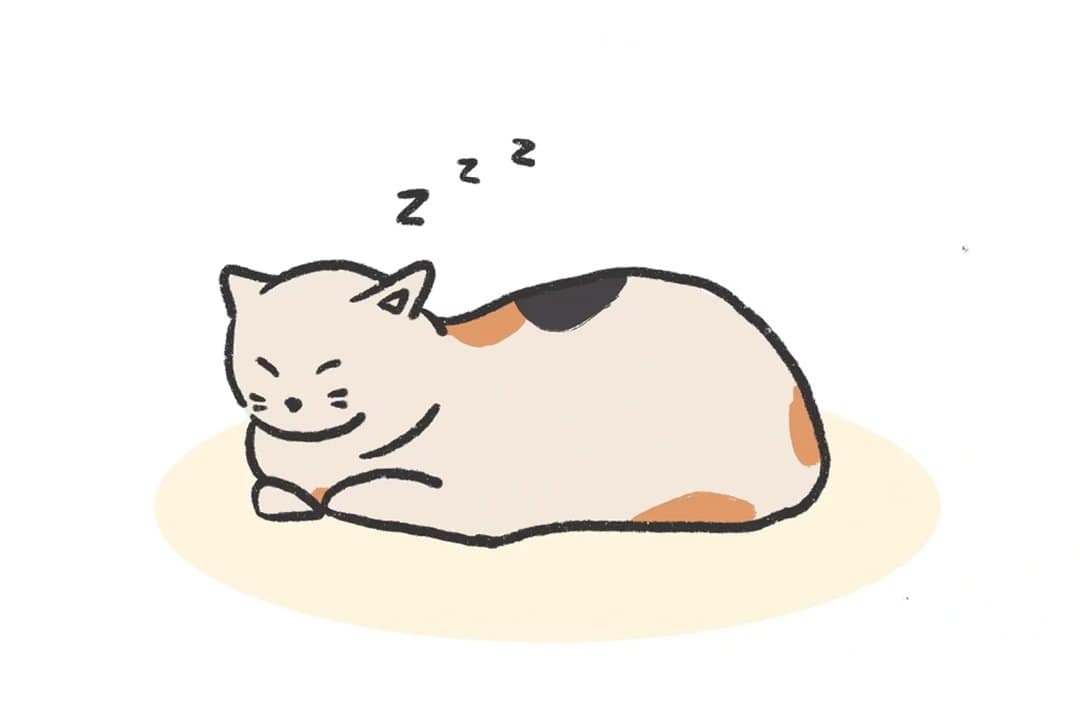
2. They Feel Safe and Trust You
Have you noticed your cat loves to loaf right next to you, or at your feet, or on your pillow? That’s a great sign. Loafing can be a sign of trust and affection toward you. When a cat chooses to loaf nearby or on their human’s belongings, it often means “I feel safe with you; I can relax here.”
Cats are naturally both predators and prey in the wild, which means they are careful about where and how they rest. Curling up in a loaf makes them a bit less agile, so they’ll only do it in a place they feel secure. If your cat loafs on your bed, next to you on the couch, or even on top of your laptop or sweater, consider it a compliment – they feel protected and comfy in your presence.
When cats feel safe, they might show other “I trust you” signals along with loafing, such as soft eye contact, slow blinking, gentle purring, or even rolling over right after loafing (exposing their belly).
Stephen Quandt notes that a loafing cat who is also purring or giving you slow blinks is demonstrating contentment and happiness. Essentially, your cat loafs near you because they love you and see you as part of their safe territory. It’s their way of being close without necessarily demanding attention – like saying “I’m good here with you.”
Also, consider where your cat loafs. Cats often pick spots that have your scent – on your pillow, on a pile of your laundry, or yes, across your keyboard while you’re working (they know that gets your attention!).
The scent and warmth from your things make them feel even more secure. Behaviorists have noted that many cats choose sleeping or resting spots based on warmth and the sense of security, including the familiar smell of their favorite human.
When your cat loafs on your pillow or even on your clothes, it’s often an extension of the same instinct behind why your cat is so cuddly: they feel safe, bonded, and comforted by your scent.
In short, if your kitty is loafing on something that smells like you or right next to you, take it as a sign of trust and companionship. Your cat is basically saying, “I’m comfortable enough to tuck in my paws and relax here with you watching my back.”
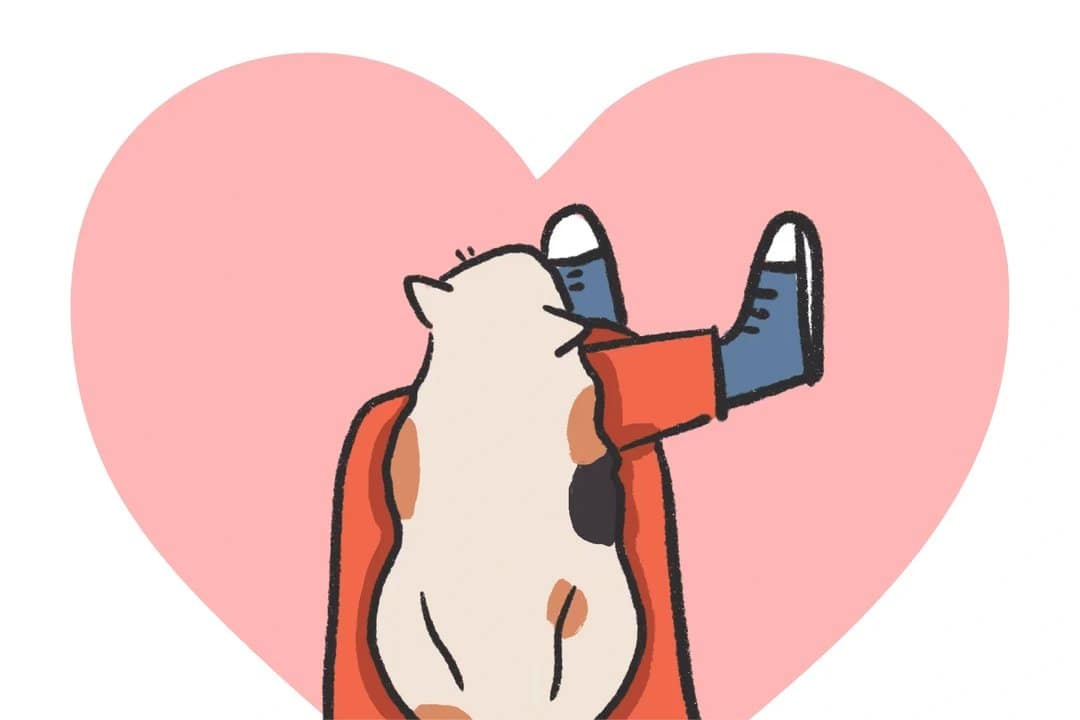
3. They’re Staying Warm (Thermoregulation)
Ever put your hands in your pockets on a chilly day? Cats do a similar thing by loafing! One practical reason cats loaf is to conserve body heat. By tucking in their legs and tail under that fluffy body, they reduce exposure of their extremities to the cold air.
Cats’ paws and legs can lose heat quickly (since there’s not much fur or fat there) – so when it’s cool, curling up in a loaf is like a cat version of snuggling under a blanket. Dr. Beaver explains that a cat’s feet and lower legs have little fat and can get cold faster, so by tucking them under the torso, the cat is keeping those parts warm using body heat.
You might notice more loafing in winter or if you keep your home AC a bit too cold for Fluffy’s liking. Cats might loaf on a cold hardwood floor to minimize contact (only the underside touches) or loaf tightly to preserve warmth. Conversely, when a cat is toasty warm (say, in the summer or near a heater), they might sprawl out instead of loafing. So, loafing can be a sign your cat is feeling a bit chilly and is bundling up.
Cats also seek external heat while loafing. Don’t be surprised if your cat loafs in a sunbeam by the window or on top of an appliance like a cable box or laptop – they love those warm spots. The loaf position maximizes contact between their belly and the warm surface, like a cat heating pad.
It’s all about thermoregulation: staying at that comfortable body temperature with minimal effort. (Cats generally prefer ambient temperatures warmer than we do – around 86-97°F for their thermoneutral zone, much higher than humans – so they are often trying to soak up heat.)
If you find your cat loafing a lot and suspect they’re doing it to keep warm, you can help by providing a cozy bed or blanket in their favorite resting area. Many cats appreciate a heated pet bed or a sunny perch. Offering a warm, safe place can reduce “cold loafing.” And of course, if your cat chooses to loaf in your lap, they might be doing it for warmth and bonding – a win-win, since you get a warm, purring lap cat!
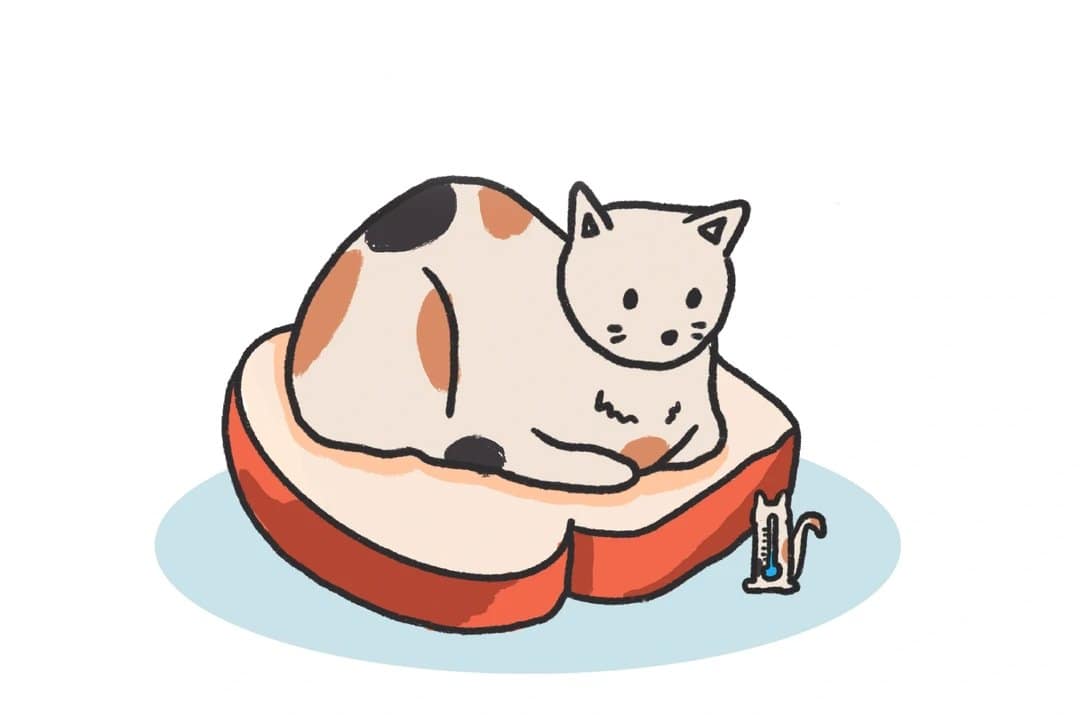
4. They’re Protecting Themselves or Feeling Alert
Now we get into the more instinctual reasons: some cats loaf as a form of low-level defense or alertness. This might sound odd – how is curling up defensive? Think back to cats’ wild ancestry.
A cat at rest in the outdoors still has to be ready for potential threats. By loafing, a cat can keep its vital organs (in the belly) protected by the floor and by its tucked limbs. Essentially, they cover the most vulnerable parts of their body.
Dr. Wailani Sung notes that a loaf allows cats to “tuck their limbs and vital organs away” while resting. Dr. Sarah Wooten, a veterinarian, similarly points out that when cats feel the need to, they’ll loaf to shield their soft underbelly – it’s a way to stay comforted yet cautious.
You might observe your cat loafing in situations where they are a bit uneasy or in unfamiliar territory. A classic example: at the vet’s office. Many cats, when placed on the exam table, will immediately hunker into a tight loaf – ears back, paws tucked – essentially making themselves as small and protected as possible.
This posture says, “I’m scared but I’m trying to stay calm and protect myself.” The cat is not fully sprawled (too vulnerable) but also not standing ready to fight (too confrontational); loafing is a middle-ground that keeps them ready to bolt if needed. It’s a defensive posture that still allows quick movement – in fact, a cat can spring out of a loaf faster than from lying flat on their side.
As Dr. Sung points out, loafing keeps a cat’s legs folded under in a way that they can push off and move quickly if an adversary approaches, more so than if they were completely on their side or back.
Even in the home, if something startles your cat slightly – say a strange noise or a new pet in the house – you might see them go into a loaf in a safe corner, observing cautiously. Their eyes will be wide open, ears perhaps perked or swiveling, and muscles a bit tense.
This loaf says, “I’m staying put and guarded.” They’re not running (because the threat isn’t extreme or they don’t want to abandon a spot), but they’re also not totally relaxed.
If you notice this kind of alert loafing (sometimes with tail tightly wrapped or twitching at the tip), check the environment: is something making your cat uneasy? Maybe give them some space or a safe high perch.
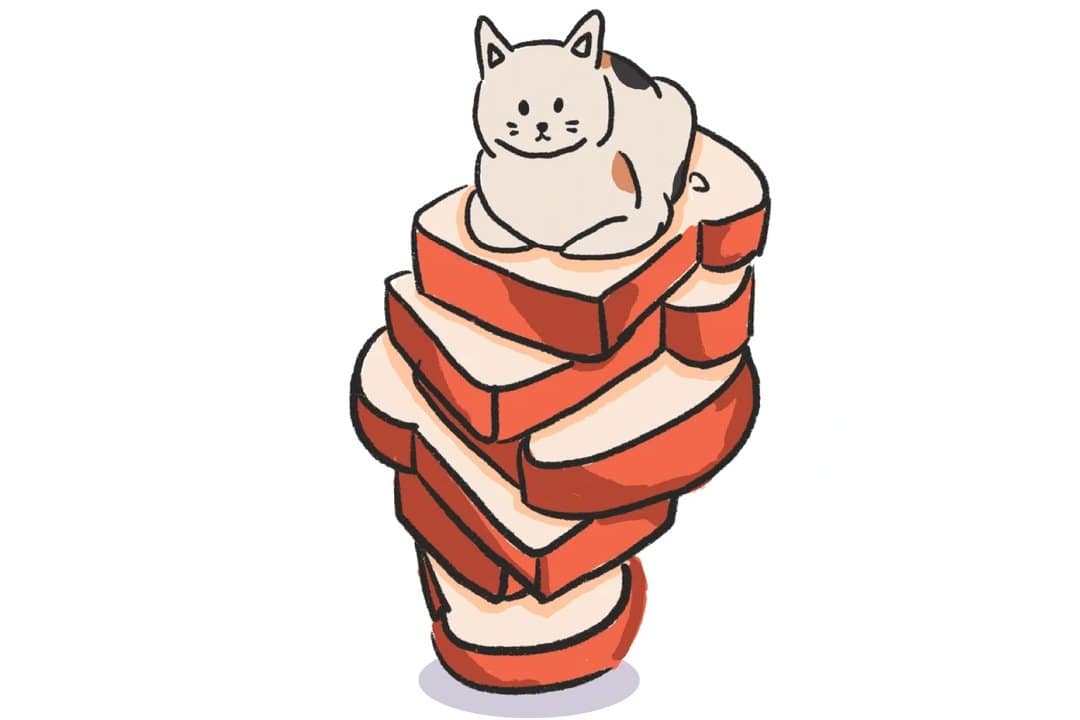
5. They’re Sick or In Pain (When Loafing May Be a Warning Sign)
Most of the time, a loafing cat is a happy cat – but we must mention the important exception: when loafing (especially a certain kind of loafing) signals that a cat is not feeling well.
As described earlier, the “meatloaf” position – where the cat is in a loaf but looks uncomfortable, maybe hunched, face down, and unresponsive – can be a red flag. Cats instinctively hide pain and illness, often by simply “loafing” quietly instead of showing obvious distress. This makes it extra important for us to know what signs to look for.
A cat that is loafing due to discomfort might exhibit the following: they stay in that position for long periods without the usual adjusting or stretching, head hung low or even pressed to the floor, squinting or looking “out of it,” and they may not react normally when you call or pet them.
Dr. Sung notes that if you gently try to interact and an ill loafing cat has a reduced response or refuses to move, that’s a strong indicator they’re not well. Essentially, the cat is enduring something – cats with belly pain, for instance, may loaf to put pressure on the abdomen as a coping mechanism. Or cats with respiratory issues might loaf to position themselves to breathe a bit easier.
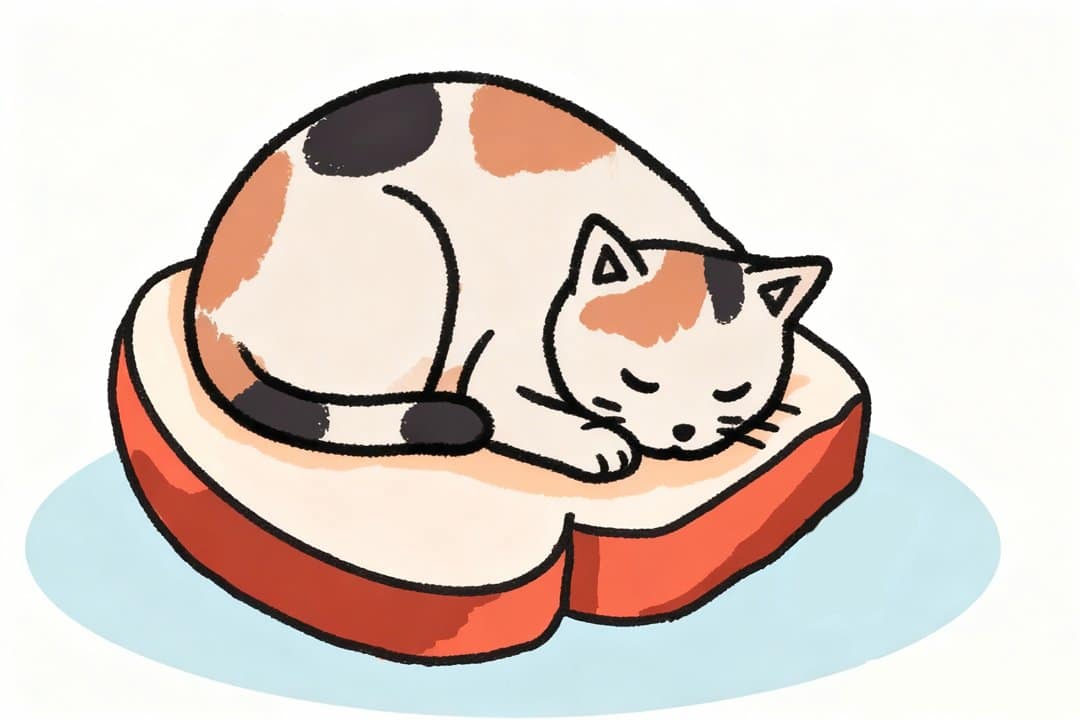
If you see a posture like this, look for other symptoms of illness or pain that often accompany a sick “loafing” cat. These can include:
- Unusual lethargy: Your cat is loafing in one spot all day, lacking their normal energy.
- Dilated (large) pupils or “glassy” eyes: Pain can cause cats’ pupils to widen.
- Ears rotated or tucked back: as if they’re uncomfortable or irritable.
- Trembling or shivering: Could indicate pain or fever.
- Rapid or strained breathing (panting, open-mouth breathing): Serious sign of distress.
- Ignoring you or hiding: If your loafing cat also retreats to hiding spots or won’t come out, something’s wrong.
- Changes in behavior: Sudden aggression, avoiding affection, or not wanting to move around (for instance, reluctance to go up stairs or jump as they used to).
- Changes in daily habits: Not eating (loss of appetite), vomiting or diarrhea, or not using the litter box normally.
If you notice a combination of a “painful-looking loaf” and any of these signs, take it seriously. Cats are stoic; by the time they’re showing discomfort by posture, they may have been hiding the issue for a while.
It could be something like an upset stomach, arthritis flare-up, injury, or illness ranging from infections to organ issues. For example, cat parents of felines with chronic kidney disease often recognize the “meatloaf” pose as a symptom during nausea episodes.
Conclusion
The cat loaf is one of feline fandom’s favorite phenomena for good reason – it’s cute, it’s quirky, and it tells us a lot about our pets. When your cat loafs, they’re often communicating comfort, trust, or simply enjoying a moment of warmth.
By paying attention to the nuances of their loaf (and knowing the warning signs of the meatloaf position), you can tune in closely to your cat’s well-being.
Keep providing a loving, secure environment, and you’ll likely be rewarded with many more sightings of your happy little bread loaf kitty in the future. It’s one of those simple joys of being a cat parent – seeing your furry friend tucked in contentment, paws hidden, eyes soft.
Now you know: when your cat is in loaf mode, they’re usually saying, “All is well in my world.” And if it’s not, you’re prepared to help. Here’s to many warm and relaxed loafing days ahead for your feline companion!
If you’re curious about more quirky cat behaviors, you can keep exploring:
– Our main cat behavior guide – scratching, purring, hiding, and more explained.
– Cat age calculator – quickly convert your cat’s age into human years to understand their life stage better.
– Cat calorie calculator – estimate how many calories your cat should eat each day to stay at a healthy weight.
FAQ
Are cats happy when they loaf?
Most of the time, yes. A cat in a relaxed loaf position is usually comfortable, content, and feels safe. As long as your cat’s body is loose, breathing is normal, and they respond to you, loafing is typically a sign of a happy cat, not a problem.
Why does my cat loaf and stare at me?
When your cat loafs and stares at you, it’s usually a sign of trust and affection. They feel safe enough to tuck their paws away while keeping an eye on you, either to bond, ask for attention, or calmly observe what you’re doing.
Do all cats loaf? My cat rarely does – should I be worried?
Not all cats loaf often, and that’s usually nothing to worry about. Loafing depends on personality, body shape, and comfort preferences. As long as your cat eats, plays, grooms, and uses the litter box normally, rarely loafing is just a personal style, not a health issue.
What’s the difference between a normal loaf and the “meatloaf” position of a sick cat?
A normal loaf looks soft and balanced: paws tucked, back gently rounded, head up, and the cat responds to you. A “meatloaf” cat looks hunched and tense, often with the head hanging down and little or no response to touch. If you see this plus lethargy, breathing changes, or appetite loss, contact your vet.
How can I get my cat to loaf more? It’s so cute!
You can’t force loafing, but you can encourage it by making your cat feel safe and cozy. Offer warm, soft resting spots, quiet hiding places, and positive interactions. A relaxed, secure cat is more likely to choose the loaf position naturally—and do it near you.
References
Feline Grimace Scale Group. (n.d.). Feline Grimace Scale – A tool for acute pain assessment in cats.
American Association of Feline Practitioners (AAFP) & International Society of Feline Medicine (ISFM). (2013). Feline environmental needs guidelines. Journal of Feline Medicine and Surgery.
AAFP. (2024). Feline chronic pain toolkit. American Association of Feline Practitioners.
Hofmeister, E. (2024). Feline chronic pain assessment. Today’s Veterinary Nurse, Fall 2024.
Basepaws Veterinary Team. (2024). Sick cat body language: How to recognize the signs. Basepaws.
Institute for Environmental Research and Education. (2025). Why do cats tuck their paws under their chest?

